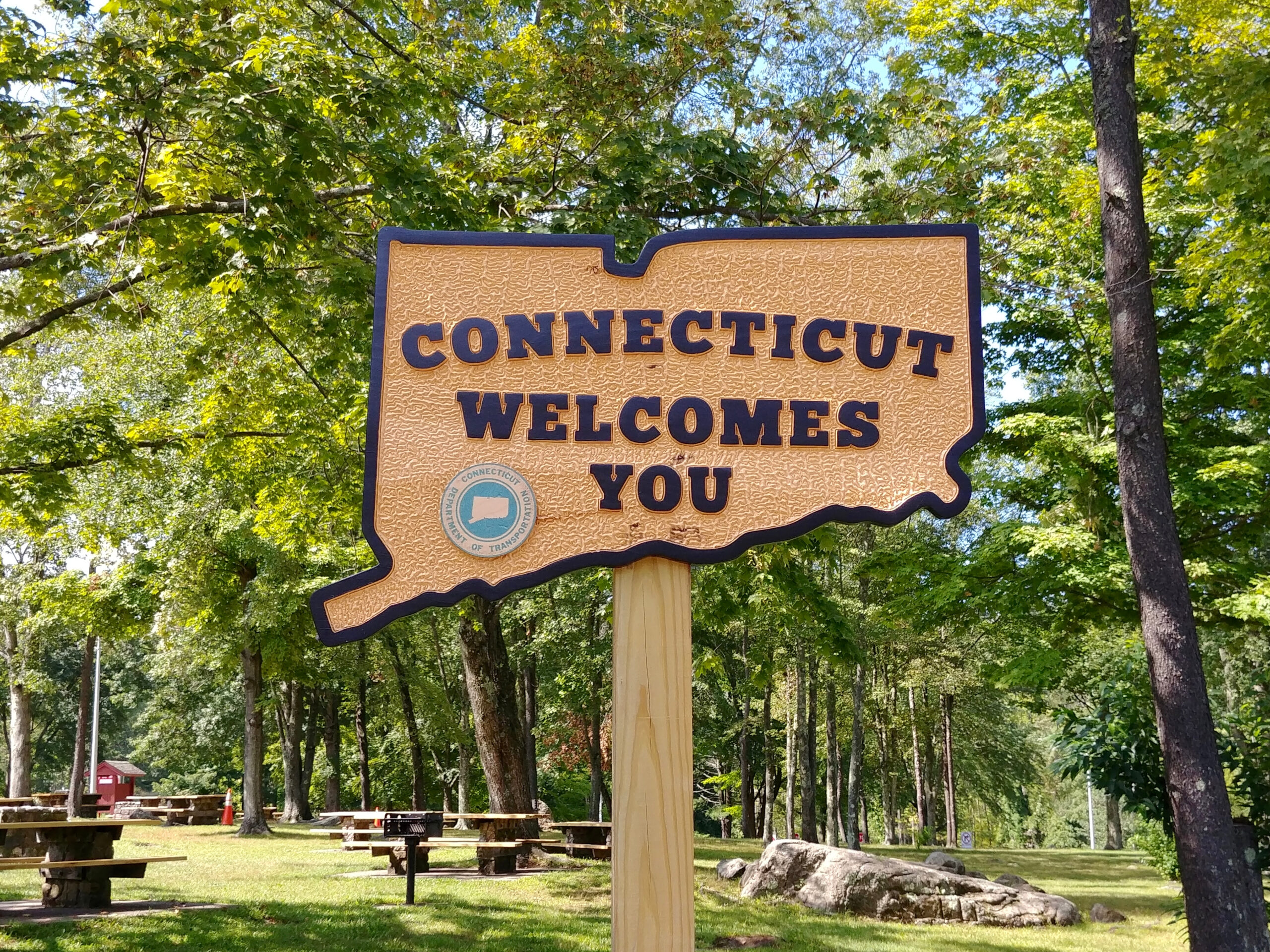Connecticut is a state of subtle charm — a place where history lingers in salt air and old stone walls, and beauty reveals itself not through grandeur, but through grace. Wedged between New York and Massachusetts, it bridges the urban energy of the metropolis and the timeless tranquility of New England’s countryside.
Its story began long before the Revolution, in harbors filled with tall ships and on greens where colonial ministers preached democracy. From those early days, Connecticut became a symbol of thoughtfulness — home to some of America’s oldest institutions, including Yale University, and to inventors and dreamers who shaped modern life.
The state’s coastline unfolds like a watercolor — rocky coves, white steeples, and weathered lighthouses overlooking Long Island Sound. Inland, forests, rivers, and hill towns preserve an older rhythm: covered bridges, autumn leaves, and farmers’ markets glowing under red barns. Connecticut’s diversity of landscapes — from the maritime charm of Mystic to the green serenity of Litchfield Hills — makes it an ideal reflection of America’s layered identity.
Culturally, it is refined but not aloof. The arts flourish in small theaters, historic homes, and museums that celebrate both the classical and the contemporary. Cities like Hartford, New Haven, and Stamford pulse with creativity and innovation, while villages like Essex and Old Saybrook whisper stories of the sea.
In Connecticut, the past and present flow together — the colonial and the modern, the industrial and the poetic. It is a state best explored slowly, along backroads lined with stone walls and maple trees, where every turn offers a glimpse of enduring beauty.
Hartford
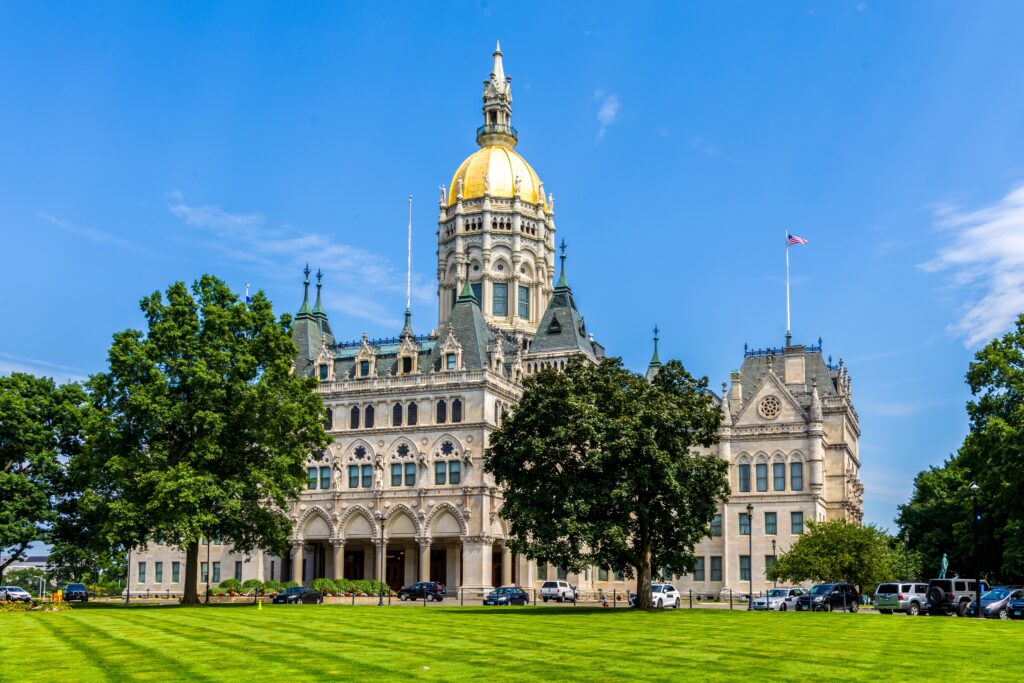
At first glance, Hartford feels like a city of contrasts — stately yet industrious, traditional yet forward-looking. Founded in 1635, it is one of the oldest cities in America and long known as the “Insurance Capital of the World,” a testament to its role in building the nation’s prosperity. Yet beneath its corporate skyline, Hartford pulses with creative depth and historical richness.
Here stood the home of Mark Twain, where the author penned The Adventures of Tom Sawyer and Adventures of Huckleberry Finn. Just next door, Harriet Beecher Stowe wrote Uncle Tom’s Cabin, shaping the conscience of a nation. Their houses now stand as museums, preserving the literary soul of Hartford.
Downtown, Bushnell Park, America’s oldest publicly funded park, unfolds in leafy beauty, crowned by the Gothic spires of the Connecticut State Capitol. The Wadsworth Atheneum, one of the oldest art museums in the country, offers an astounding collection from Caravaggio to contemporary works.
Hartford may not shout for attention, but it rewards those who listen. It’s a city of quiet achievement — elegant, thoughtful, and deeply rooted in the American story.
New Haven
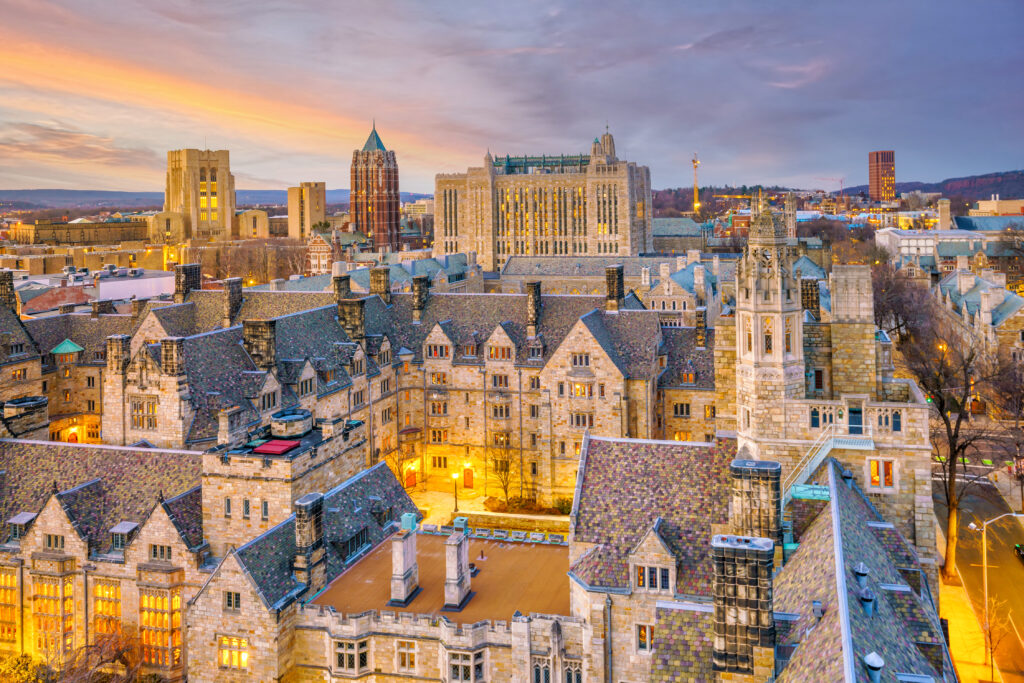
Few American cities combine intellect, art, and architecture as gracefully as New Haven. Anchored by the ivy-clad walls of Yale University, founded in 1701, the city feels both scholarly and soulful — a place where the past inspires constant reinvention.
The university campus is a masterpiece of collegiate Gothic architecture, its courtyards echoing with history. Within its museums — the Yale University Art Gallery and the Yale Center for British Art — are world-class collections open to the public, enriching the cultural life of the city.
But New Haven is far from an ivory tower. Its downtown pulses with creativity — from experimental theater at the Yale Repertory Theatre to music spilling from bars and cafés. It also happens to be the birthplace of the American pizza, or “apizza,” as locals call it — a culinary claim rivaling its academic ones.
New Haven embodies Connecticut’s dual character: intellectual yet approachable, historic yet evolving. It’s a city that invites both reflection and celebration.
Mystic
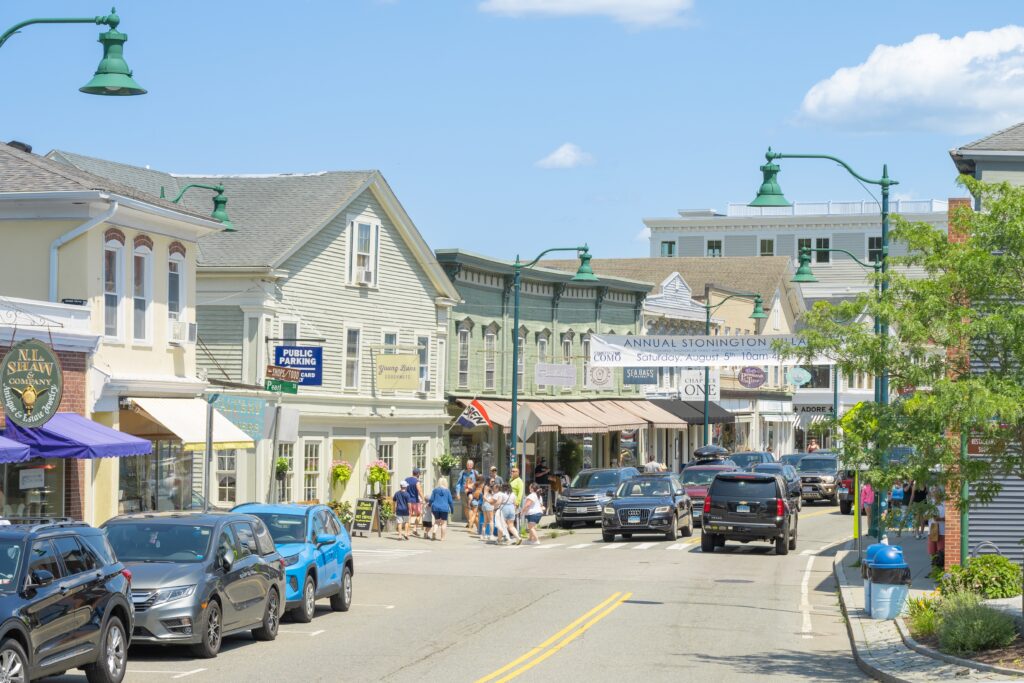
Nestled along the Mystic River, the seaside village of Mystic is a living postcard of maritime New England. Once a shipbuilding center in the 19th century, it now preserves that heritage through the Mystic Seaport Museum, the largest maritime museum in the United States. There, tall ships creak in the harbor, and craftsmen demonstrate traditional boatbuilding techniques that keep the town’s seafaring legacy alive.
Across the river, the Mystic Aquarium introduces visitors to the wonders of marine life — from playful beluga whales to rescued seals — reinforcing the town’s connection to the sea. The charming downtown, with its drawbridge, boutiques, and bakeries, invites long, unhurried strolls.
Mystic is more than picturesque; it’s emotionally rich. Every breeze carries the scent of salt and wood, every street hums with the memory of sailors and dreamers. Whether explored by sailboat or on foot, Mystic embodies the romantic essence of coastal Connecticut.
Old Saybrook
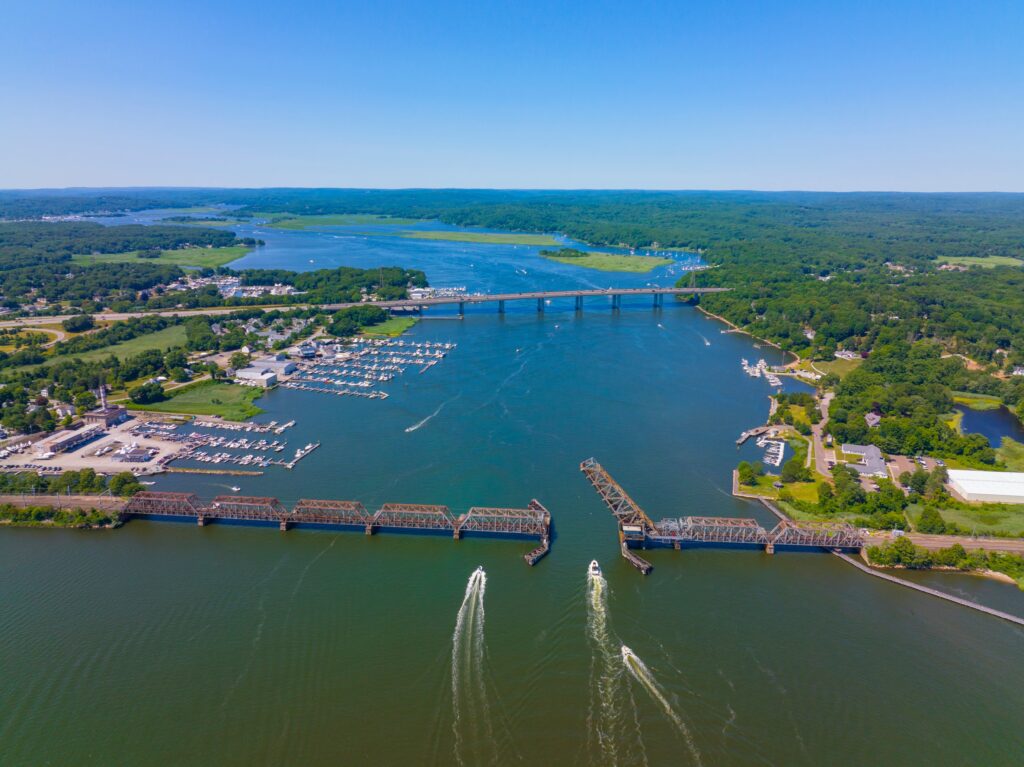
Perched at the mouth of the Connecticut River, Old Saybrook is one of the state’s oldest settlements, dating back to 1635. Its history is woven into the very landscape — white clapboard houses, weathered docks, and lighthouses that mark the passage of time.
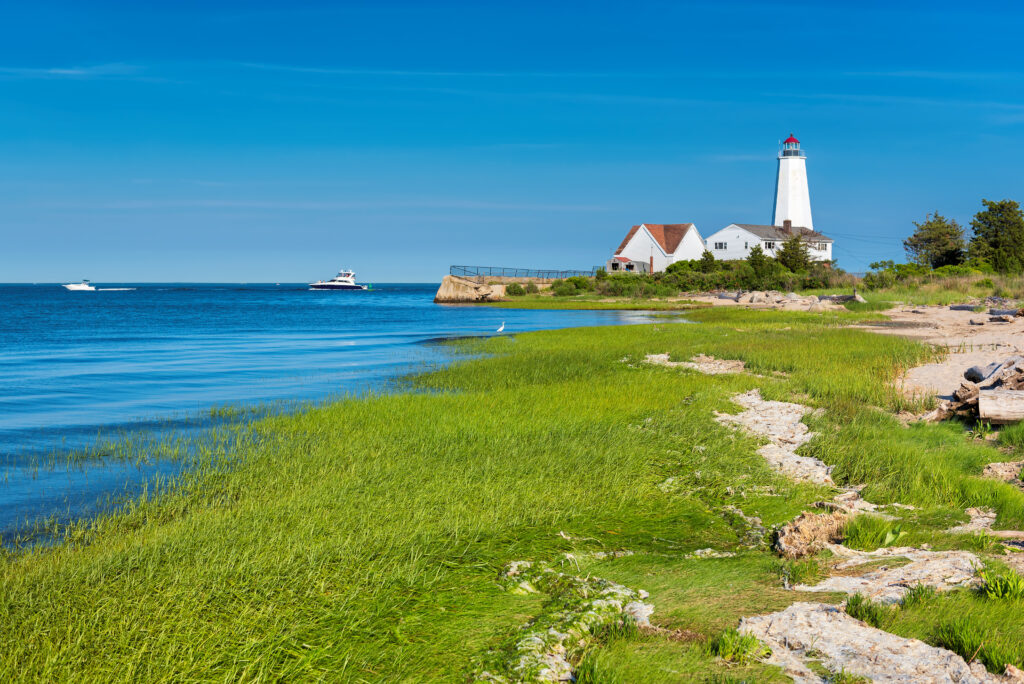
The Saybrook Breakwater Lighthouse, standing guard at the harbor’s entrance, is a local icon, while the Katharine Hepburn Cultural Arts Center celebrates the town’s most famous resident. Known as “The Kate,” this intimate theater hosts concerts, plays, and films, adding vibrant cultural life to the quiet coastal town.
Nearby, the Connecticut River Estuary teems with wildlife — a paradise for birdwatchers and kayakers. Strolling along Main Street, visitors find antique shops, cozy inns, and restaurants that serve seafood fresh from the Sound.
Old Saybrook feels timeless — a place where the sea shapes every story and tranquility comes as naturally as the tide.
Essex
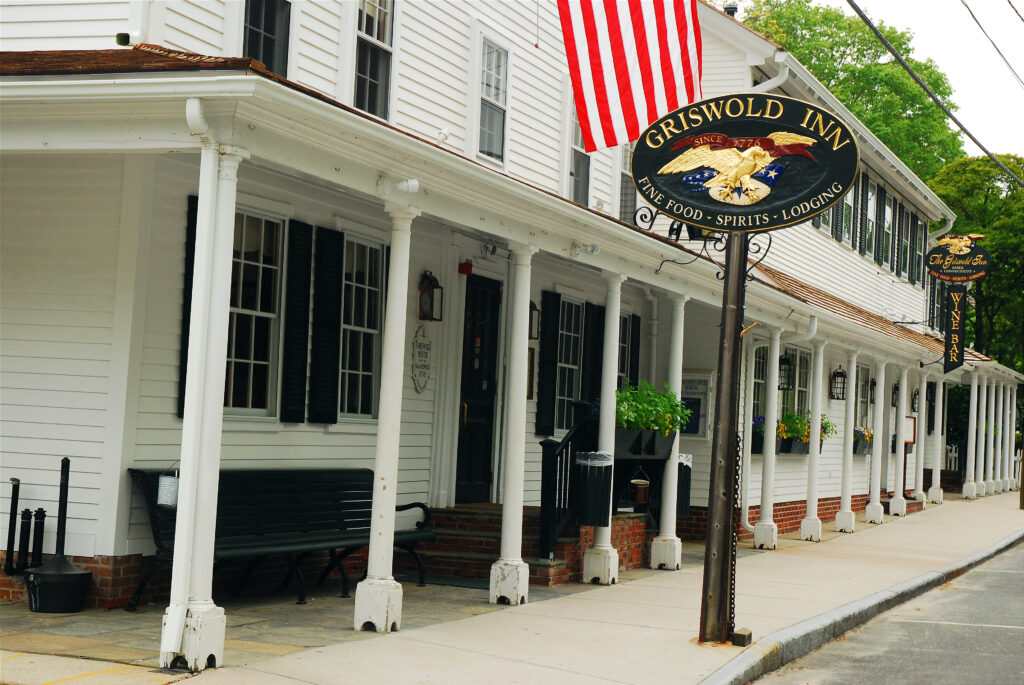
Few towns capture the quintessential charm of New England like Essex, a riverside gem that seems untouched by time. With its white church steeples, colonial houses, and shaded lanes, Essex looks like the set of a period film — but its beauty is authentic, born of centuries of care.
Once a shipbuilding port, Essex retains its nautical soul. The Connecticut River Museum tells stories of whalers, traders, and even a British raid during the War of 1812. The Essex Steam Train, still chugging through the countryside, offers a nostalgic journey along the river’s edge — a favorite among families and romantics alike.
In spring and summer, yachts glide past the marina, and the air fills with laughter and the scent of blooming gardens. Essex is the kind of place that makes visitors pause, breathe, and remember that beauty often resides in simplicity.
It is, in many ways, the soul of small-town Connecticut — elegant, enduring, and quietly radiant.
Stamford
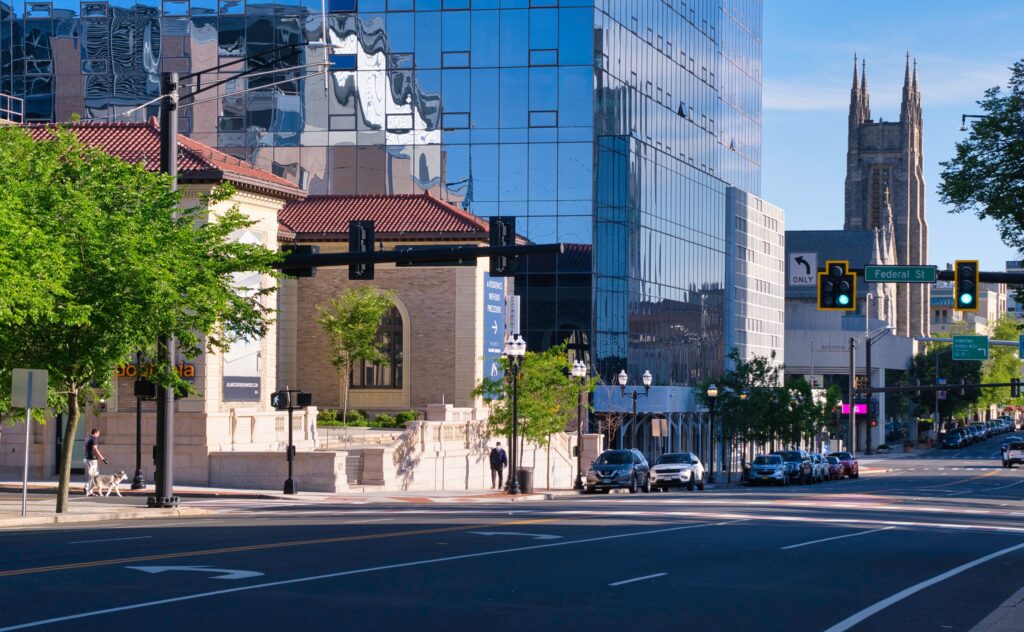
Rising on the edge of the Long Island Sound, Stamford is Connecticut’s most modern face — a sleek and dynamic city that balances business acumen with coastal charm. Known as a financial and tech hub within commuting distance of New York City, it has a skyline of glass and steel that reflects both ambition and progress.
Yet, for all its urban polish, Stamford remains deeply connected to nature. Along the shoreline, Cove Island Park offers sandy beaches, birdwatching trails, and views that open toward the horizon. The Harbor Point district, once an industrial zone, has transformed into a lively waterfront neighborhood filled with restaurants, marinas, and art installations.
Downtown hums with culture — from live performances at the Palace Theatre to community festivals that light up its plazas. The city’s cosmopolitan dining scene mirrors its diversity, ranging from classic Italian trattorias to experimental fusion cuisine.
Stamford proves that Connecticut isn’t just colonial towns and quiet countryside; it’s also innovation, energy, and urban sophistication — a city that never stops evolving while staying connected to the water that first gave it life.
Norwalk
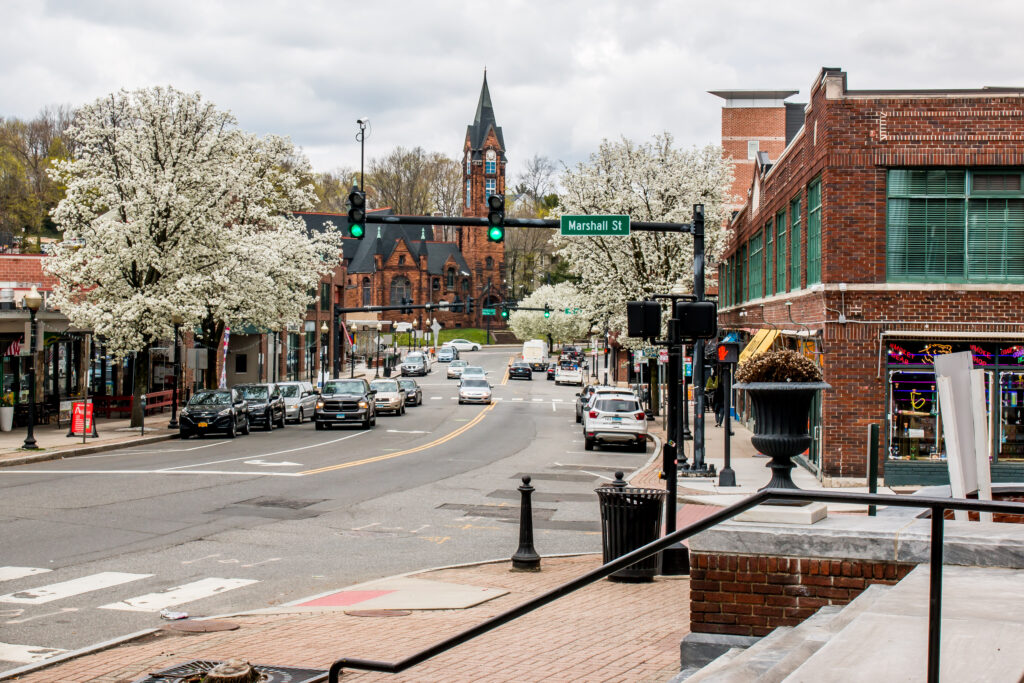
A coastal town with a maritime soul, Norwalk blends historic character with a forward-looking creative pulse. The heart of its heritage lies in the Maritime Aquarium, one of New England’s finest, where visitors can explore the aquatic ecosystems of Long Island Sound and even touch stingrays. Just next door, the SONO Collection, a sleek shopping and entertainment complex, represents the city’s modern rhythm.
Norwalk’s roots stretch back to 1649, and echoes of its seafaring past can still be felt at Sheffield Island Lighthouse, accessible by ferry and offering panoramic views across the Sound. The Lockwood-Mathews Mansion Museum, a masterpiece of 19th-century architecture, transports visitors into the opulence of America’s Gilded Age.
Today, the South Norwalk (SoNo) district pulses with life — boutique galleries, breweries, live music, and riverside dining that make evenings shimmer. Norwalk captures Connecticut’s ability to weave past and present into one seamless experience: maritime tradition meeting modern creativity.
Greenwich
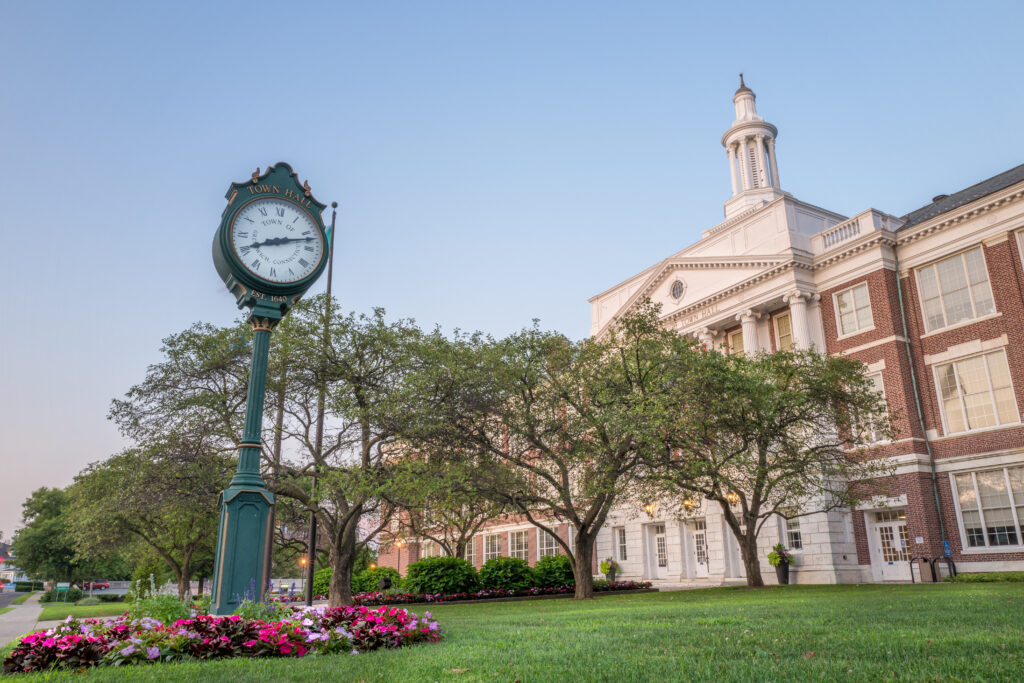
Elegant, leafy, and effortlessly sophisticated, Greenwich stands as one of Connecticut’s crown jewels — a town where history, wealth, and natural beauty coexist in harmony. Just an hour from Manhattan, it feels worlds away, with its pristine parks, grand estates, and tranquil waterfronts.
The Greenwich Avenue shopping district could rival any European boulevard, lined with designer boutiques, cafés, and art galleries. Yet beyond its chic façade, Greenwich offers deep cultural roots: the Bruce Museum combines art and natural history in a single inspiring space, while the Greenwich Historical Society preserves the town’s colonial legacy.
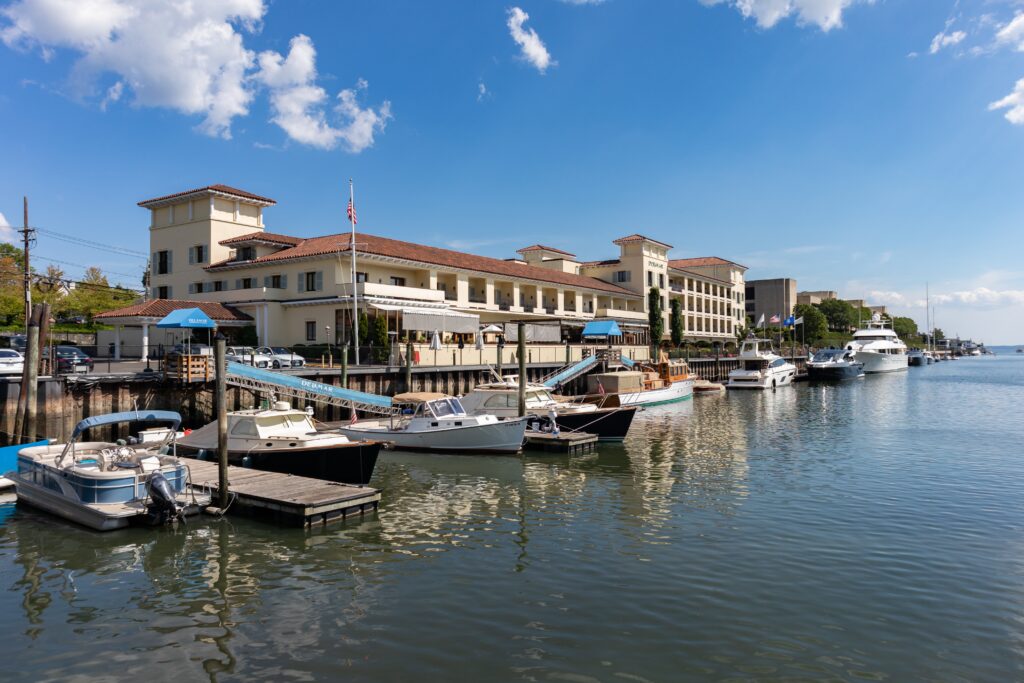
Outdoors, Greenwich Point Park (known locally as Tod’s Point) offers beaches, trails, and sweeping views of the Sound — a favorite retreat for locals seeking calm. The harbor is dotted with sailboats that catch the sunset like brushstrokes of light.
Greenwich embodies refined New England living — a community of grace and intellect, where the hum of the city gives way to the rhythm of the sea.
Fairfield
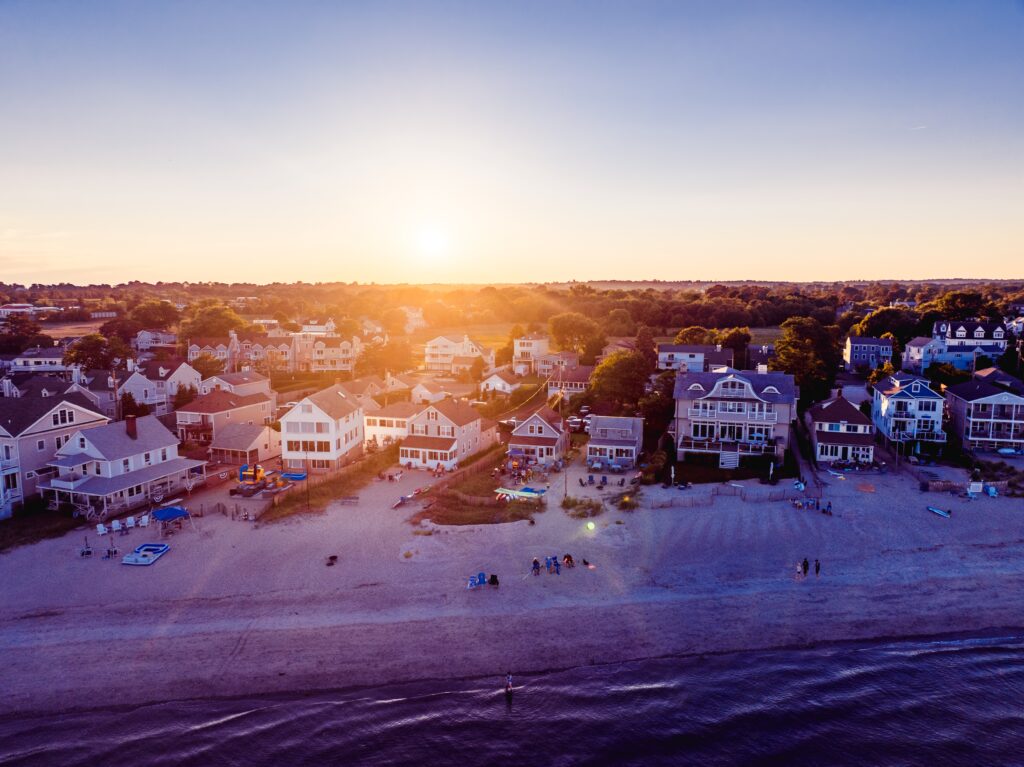
Between the sea and rolling countryside lies Fairfield, a town that perfectly balances sophistication and warmth. Its five miles of shoreline invite leisurely walks along Jennings Beach and Penfield Beach, while the historic downtown offers bookstores, coffee shops, and restaurants filled with local charm.
Fairfield’s identity is deeply tied to education and culture. Fairfield University and Sacred Heart University infuse the town with youthful energy and intellectual life, while the Fairfield Museum and History Center tells stories of colonial resilience and coastal prosperity.
Nature lovers find sanctuary in Lake Mohegan and Sasco Creek, where trails wind through forests and meadows alive with birdsong. Summer concerts on the Green bring the community together, creating a sense of connection rare in modern towns.
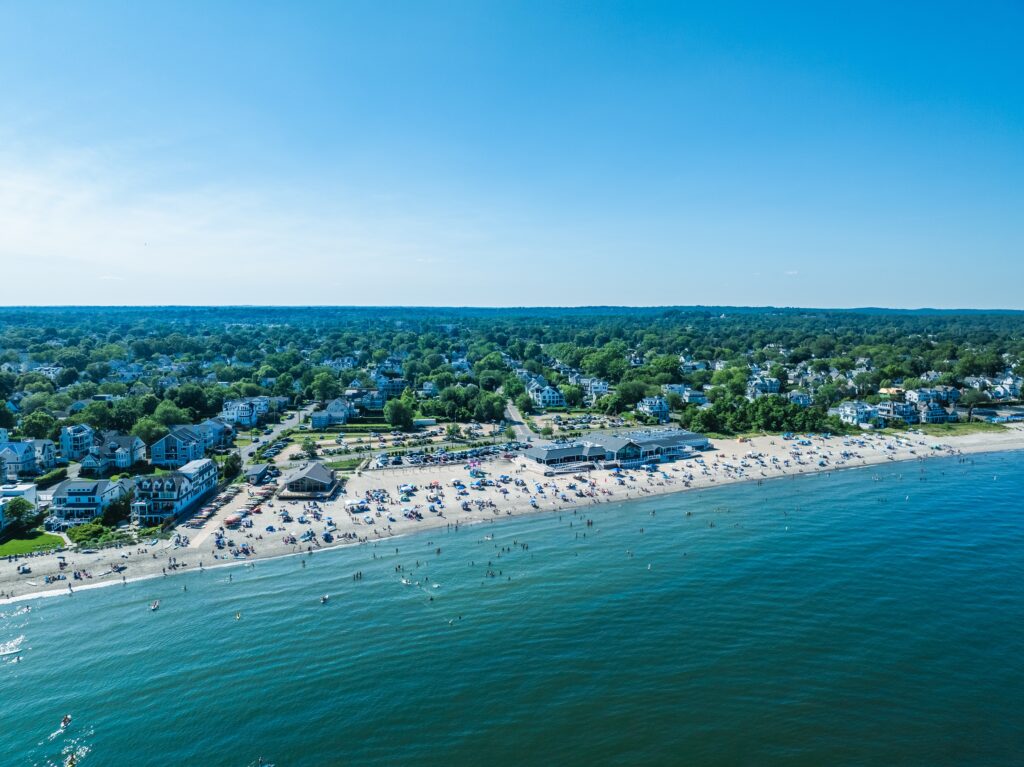
Fairfield is not just a place to live; it’s a place to belong. Its beauty lies in its balance — ocean breezes meeting suburban comfort, tradition blending with progress, and every sunset reminding you that this is coastal Connecticut at its finest.
Bridgeport
Often underestimated, Bridgeport is a city of rebirth and resilience — a place where industry once defined the skyline and creativity now fuels its revival. As Connecticut’s largest city, Bridgeport carries a proud working-class heritage, yet it’s rapidly reinventing itself through art, innovation, and waterfront development.

The Barnum Museum, honoring the legendary showman P.T. Barnum — once the city’s mayor — celebrates the spirit of imagination that still defines Bridgeport. Nearby, the Beardsley Zoo provides a delightful escape into nature, while the revitalized Steelpointe Harbor buzzes with new life, from marinas to restaurants.
Bridgeport’s cultural heartbeat thrives at the Downtown Cabaret Theatre and Bijou Theatre, venues that echo with music, laughter, and community spirit. Along Seaside Park, designed by Frederick Law Olmsted (the landscape architect of Central Park), waves lap against golden sand in quiet defiance of the city’s industrial past.
Bridgeport’s beauty lies in its honesty — a city that owns its scars, celebrates its stories, and continues to evolve. It is Connecticut’s testament to resilience, creativity, and the enduring power of reinvention.
Litchfield

Few towns capture rural New England’s grace as completely as Litchfield. Founded in 1719, it remains a living museum of colonial charm — white clapboard houses, tree-lined streets, and rolling green meadows that seem unchanged by time. Yet beneath its tranquility lies deep historical significance: Litchfield was once home to the Litchfield Law School, the first in the United States, and a center of early American education.
The Litchfield Historical Society preserves that legacy, while White Memorial Conservation Center offers 4,000 acres of trails, woodlands, and shimmering ponds — a haven for walkers, birdwatchers, and anyone seeking stillness.

Downtown Litchfield feels both genteel and alive, its cafés and boutiques set within centuries-old buildings. Every season paints the town anew: spring blossoms, autumn fires of crimson and gold, and winters wrapped in snow like a storybook cover.
Litchfield’s essence is timelessness — a perfect balance between history and natural harmony, where beauty whispers rather than shouts.
Kent
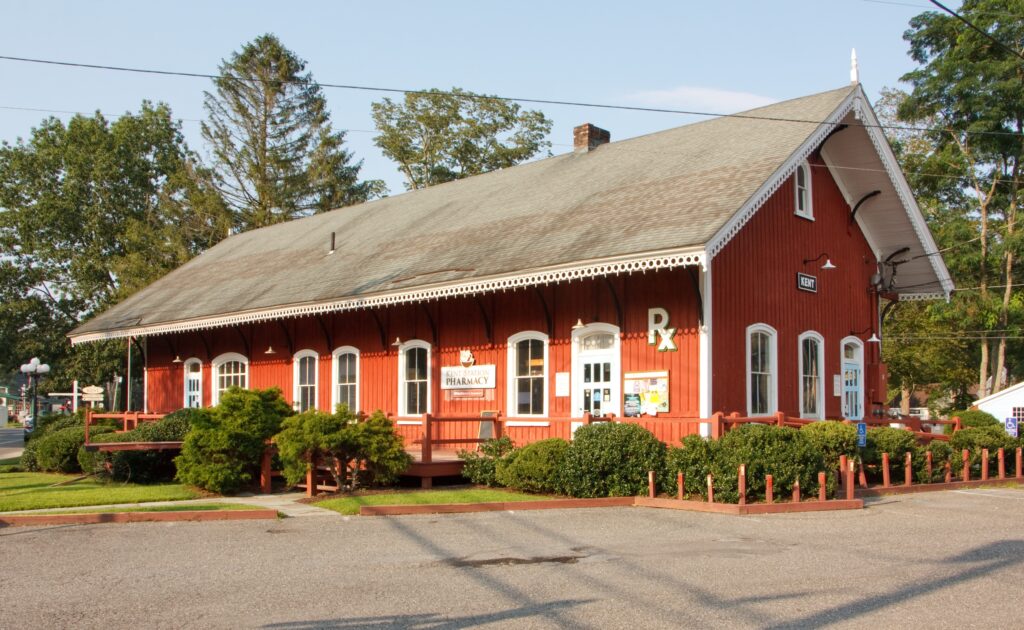
Nestled in the northwest corner of the state, Kent is a small town with vast soul — a place where art, wilderness, and tranquility blend seamlessly. The Housatonic River flows nearby, carving through wooded hills that flame with color in autumn. Outdoor enthusiasts flock to Kent Falls State Park, where a series of cascading waterfalls tumble down a rocky gorge, creating one of Connecticut’s most breathtaking natural spectacles.
In the town center, galleries and bookstores reveal Kent’s artistic heart. The Kent Art Association and independent studios showcase local creativity, while cozy cafés and antique shops invite slow discovery.
Just outside town lies Bulls Bridge, a covered bridge dating back to the 19th century, offering postcard-perfect views of the river. Whether visited in the hush of winter or under summer’s green canopy, Kent embodies peaceful sophistication — the kind of quiet that deepens the soul.
Cornwall

In Cornwall, the world feels wider and slower, defined by hills, forests, and the famous West Cornwall Covered Bridge that arches gracefully over the Housatonic River. It’s one of New England’s most photographed landmarks — a symbol of enduring craftsmanship and connection.
Cornwall’s landscape is pure poetry: fields dotted with barns, stone walls threading through the countryside, and trails that wind up to panoramic vistas at Mohawk Mountain State Park. In winter, the slopes welcome skiers, while the rest of the year invites hikers and dreamers alike.
There’s a quiet strength to Cornwall — its beauty is understated, honest, and deeply tied to the land. Artists and writers have long found refuge here, drawn by its authenticity and the hush of its forests.
To visit Cornwall is to step into a painting and realize it’s real. It’s one of Connecticut’s purest expressions of rural grace.
Washington

Washington is often described as the quintessential Connecticut village — the inspiration for the fictional “Stars Hollow” in Gilmore Girls, and it’s easy to see why. Nestled among hills and river valleys, it exudes warmth, community, and quiet sophistication.
Founded in the 18th century, Washington retains its colonial architecture and open landscapes, but it also pulses with modern creativity. The Judy Black Memorial Park and Gardens hosts art exhibits and concerts, while the nearby Institute for American Indian Studies connects visitors with the region’s deeper history.
Nature embraces the town on all sides — from the scenic beauty of Steep Rock Preserve, where the Shepaug River curls through wooded ravines, to the tranquil meadows that unfold under wide Connecticut skies.
Washington’s charm lies not in spectacle but in serenity. It is a place that welcomes reflection and reminds visitors of what community once meant — and still can.
Roxbury

Tucked quietly into the Litchfield Hills, Roxbury is one of Connecticut’s best-kept secrets — a town that radiates rustic beauty and quiet refinement. Its meandering roads are lined with stone walls and historic homes, many dating back to the 18th century.
Roxbury’s rural landscape has long attracted artists and writers, including the playwright Arthur Miller, who lived here for decades. That creative legacy endures in local galleries and cultural events that celebrate craftsmanship and storytelling.
The Mine Hill Preserve offers a glimpse into both nature and history, with hiking trails winding through forested hills and the remnants of 19th-century ironworks. It’s a place where time feels suspended, and each step connects past and present.
In Roxbury, beauty is subtle — found in sunlight on old barns, in the whisper of maples along the road, in the peace that comes from being perfectly off the beaten path. It is New England distilled to its purest form.
Stonington
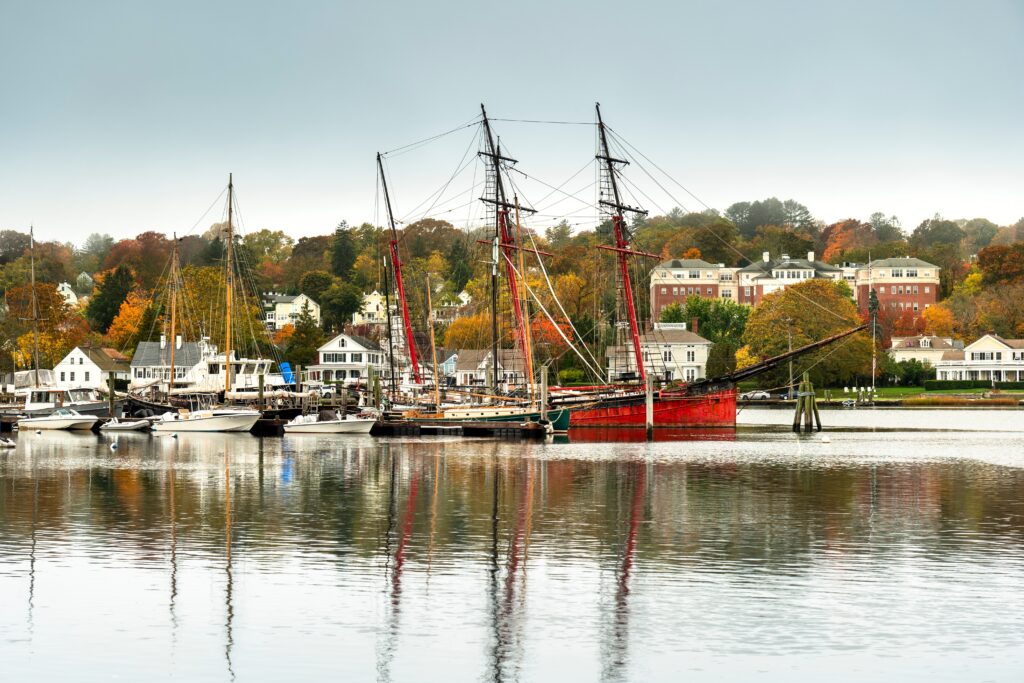
Perched on a narrow peninsula reaching into the Atlantic, Stonington is perhaps Connecticut’s most picturesque coastal village — a living tapestry of maritime history, cobbled streets, and seaside tranquility. Founded in the 1600s, it still bears the charm of an old fishing port, where weathered homes overlook a harbor filled with sailboats and lobster traps.
The Old Lighthouse Museum, standing sentinel since 1840, offers panoramic views across the Sound, while the Stonington Borough itself feels like a step back in time — boutiques, art galleries, and seafood restaurants tucked into 18th-century buildings.
Nearby, Stonington Vineyards adds a touch of sophistication to the town’s rustic charm, offering rolling vineyards and tastings with ocean breezes drifting through.
Stonington’s appeal lies in its authenticity. It’s not a resort town, but a real working harbor that has adapted gracefully to modern life. At sunset, when the sky glows pink over the water and the lighthouse lamp begins to turn, Stonington becomes pure New England poetry.
Guilford
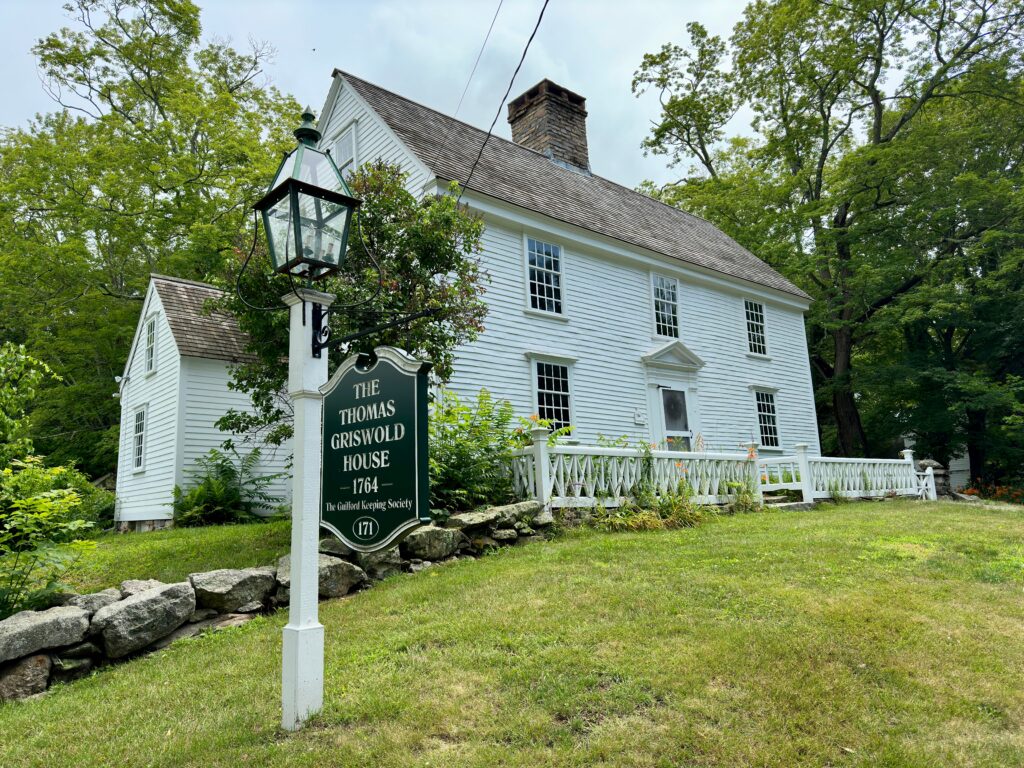
Guilford is one of Connecticut’s oldest and most beautiful towns — a perfect blend of colonial history and coastal serenity. Founded in 1639, it boasts one of the largest and most picturesque village greens in New England, surrounded by elegant 18th- and 19th-century homes that tell centuries of quiet prosperity.
The Henry Whitfield State Museum, built in 1639 and the oldest stone house in New England, preserves the town’s Puritan roots, while nearby Bishop’s Orchards offers the simple joys of apple picking, cider tasting, and farm-fresh produce.
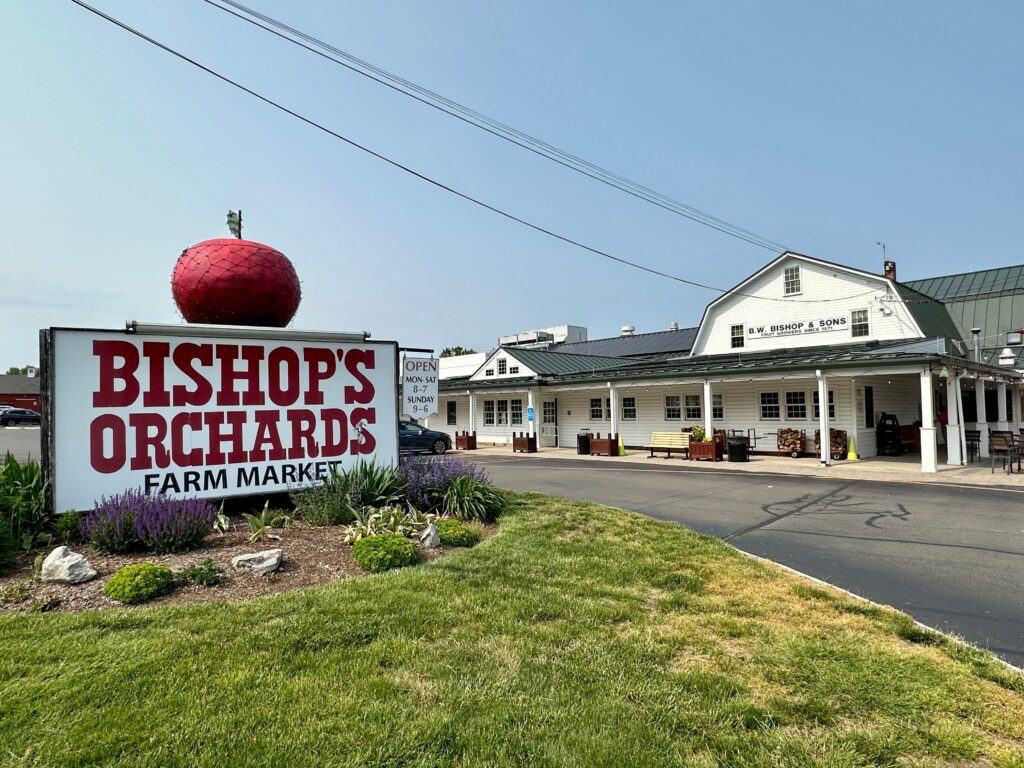
Down by the water, Jacobs Beach and the Guilford Town Marina provide tranquil escapes — perfect for kayaking or just sitting by the Sound.
Guilford’s charm is subtle but enduring. It’s a place where history and community still define daily life, and where every season — from lilac-filled springs to glowing autumns — feels perfectly framed by the town’s timeless green.
Madison

Elegant yet unpretentious, Madison is one of Connecticut’s coastal treasures — a place where sandy beaches, literary heritage, and quiet luxury coexist in harmony. The heart of its allure lies along the water at Hammonasset Beach State Park, the state’s largest shoreline park, with over two miles of golden sand and nature trails that weave through salt marshes.

Downtown Madison is charming and cultured, anchored by RJ Julia Booksellers, one of America’s most beloved independent bookstores, where authors from across the country come to speak and sign. Around it, boutiques, cafés, and art galleries give the town a welcoming sophistication.
The Surf Club and Meigs Point Nature Center celebrate Madison’s connection to the sea, offering spaces for both recreation and reflection.
Madison embodies coastal Connecticut at its best — graceful, creative, and deeply tied to the rhythms of land and sea. It’s the kind of place where time slows, conversation flows, and sunsets seem to linger just a little longer.
Chester

Tucked along the Connecticut River, Chester is a tiny town with immense character — a haven for artists, craftsmen, and lovers of fine food. Its narrow streets climb gently from the riverbank, lined with 19th-century buildings that now house studios, galleries, and restaurants of remarkable quality.
The Chester Gallery and Leif Nilsson Spring Street Studio highlight the town’s artistic pulse, while the Good Elephant Bistro and other eateries transform local ingredients into inspired cuisine. The nearby Gillette Castle State Park, just across the river by ferry, adds a touch of theatrical grandeur — a whimsical stone fortress built by actor William Gillette in the early 1900s.
Chester may be small, but its energy is magnetic. On summer nights, live music drifts through the streets, and locals gather for wine tastings, theater, and conversation. It is a village where creativity thrives amid simplicity — proof that beauty doesn’t need scale, only soul.
Branford

Spread along the Long Island Sound just east of New Haven, Branford is a mosaic of shoreline neighborhoods, rocky coves, and small islands that shimmer offshore. The Thimble Islands, a cluster of tiny, inhabited isles scattered across the bay, give Branford its unique maritime identity — best explored by boat on a sunny afternoon.
The town’s Stony Creek district captures its artistic and nautical heart, with pink granite cliffs, harbor views, and galleries celebrating local talent. Branford Point Beach offers relaxed seaside charm, while Supply Ponds and Branford Land Trust trails provide peaceful woodland escapes.
Branford also boasts a lively brewery scene, with Stony Creek Brewery blending coastal views with vibrant social life — a modern echo of the town’s communal spirit.
Branford’s magic lies in its variety: sea and forest, art and industry, quiet and convivial. It’s the kind of place that rewards exploration and reminds visitors why the Connecticut coast feels so alive.
New London
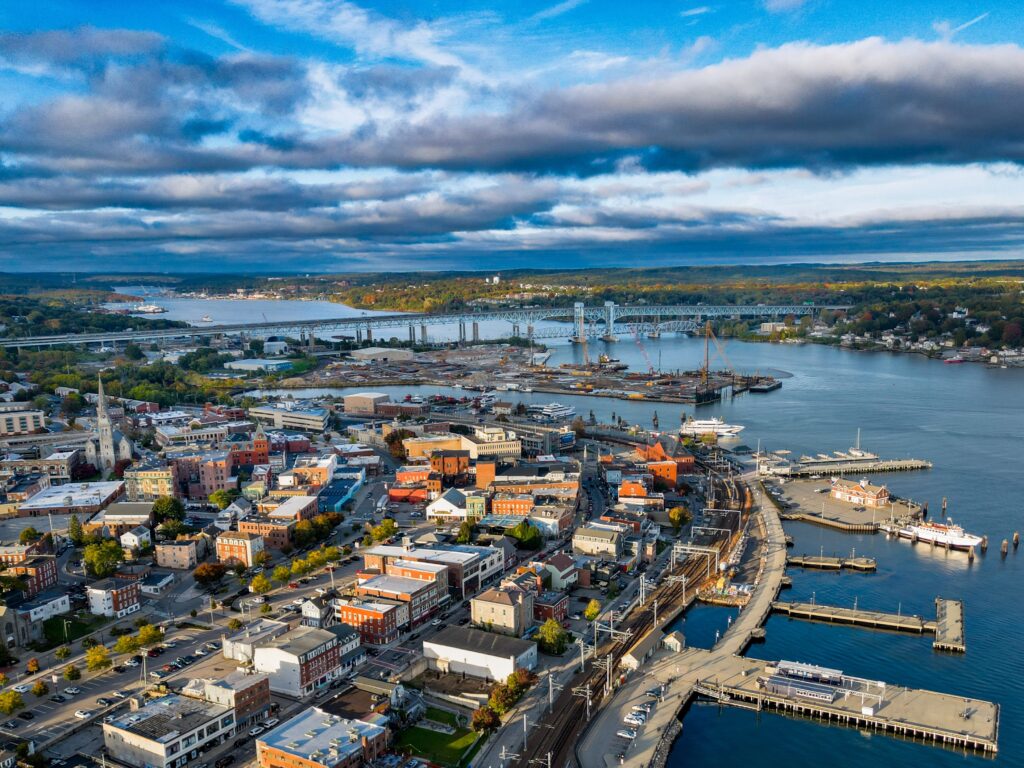
Set along the Thames River, New London is a city built on salt air, history, and creativity. Once one of America’s busiest whaling ports, it retains the architecture and character of its maritime heyday — grand 19th-century buildings, old docks, and cobbled streets that lead to the water’s edge.
The U.S. Coast Guard Academy and Connecticut College anchor the city’s intellectual and civic identity, while the Garde Arts Center, a beautifully restored 1920s theater, fills the downtown with film, music, and performance.
Down by the harbor, ferries connect to Fishers Island and Block Island, echoing the seafaring rhythms that have always defined the city. Murals, galleries, and live music venues now color the once-industrial waterfront, creating a dynamic contrast between history and innovation.
New London’s soul is its ability to evolve — a working port transformed into a haven for artists and dreamers, a place where the sea’s call still defines its heartbeat.
Middletown

Centrally located along the Connecticut River, Middletown beautifully blends academic vibrancy, industrial history, and small-city charm. Founded in 1650, it once thrived as a shipbuilding hub; today, it’s known for Wesleyan University, one of the country’s leading liberal arts schools, which infuses the town with youthful energy and cultural dynamism.
Main Street, lined with international restaurants, cafés, and boutiques, has been called one of the most vibrant downtowns in New England. The Buttonwood Tree Performing Arts Center and Oddfellows Playhouse nurture creativity at every level, making the arts feel accessible and alive.
Just beyond the urban core, the Wadsworth Falls State Park offers a natural escape, with forest trails and cascading waterfalls just minutes from downtown.
Middletown captures Connecticut’s spirit of reinvention perfectly — a place where historic roots and forward-thinking culture thrive side by side, and where the river continues to inspire progress as it always has.
Torrington
Nestled in the rolling hills of northwestern Connecticut, Torrington embodies the industrious heart of the state’s interior. Once a powerhouse of brass manufacturing, it has reimagined itself as a center for the arts and outdoor adventure.
At its core stands the Warner Theatre, a 1930s Art Deco gem restored to its former splendor, now hosting concerts, plays, and film festivals. Around it, galleries, antique shops, and creative studios have transformed the old factory district into a cultural quarter known as Downtown Torrington Arts & Culture Coalition.

Beyond town, the Burr Pond State Park and the Stillwater Pond Recreation Area offer pristine settings for kayaking, fishing, and quiet reflection. The hills around Torrington glow with autumn color, turning every drive into a scenic escape.
Torrington tells a familiar Connecticut story — of resilience, craftsmanship, and renewal. It’s a reminder that beauty isn’t only found in coastal charm but also in the persistence of communities that reinvent themselves without losing their soul.
Meriden

In the very heart of the state, Meriden stands as a monument to innovation and endurance. Known in the 19th century as the “Silver City” for its famed silver and pewter industries, it still wears that legacy proudly — from the architecture of its old factories to the gleam of restored public spaces.
Modern Meriden thrives on community and nature. The Hubbard Park, designed with input from Frederick Law Olmsted, offers over 1,800 acres of trails, ponds, and gardens crowned by Castle Craig, a stone tower perched high on East Peak. The view from the top — a vast sweep of Connecticut’s central valley — is unforgettable.
The town’s downtown area has undergone an impressive revitalization, with murals, markets, and new restaurants transforming its face. Meriden Green, a beautifully landscaped civic park, now serves as a gathering place for festivals and concerts.
Meriden’s story is one of revival — from silver to sustainability, from factory smoke to open skies — a reflection of Connecticut’s enduring ability to reinvent itself with grace.
Putnam

Tucked in Connecticut’s “Quiet Corner,” Putnam might seem modest at first glance, but it’s a town with a big creative heart. Once a textile mill hub along the Quinebaug River, Putnam has re-emerged as one of New England’s most surprising arts destinations.
The Putnam Arts Council and local galleries have turned the town’s historic buildings into studios, cafés, and performance spaces. The annual First Friday Festival fills the streets with live music, food stalls, and local artisans, turning the small downtown into a lively celebration of community spirit.
The surrounding countryside — dotted with forests, farms, and old rail trails — adds to Putnam’s appeal, offering peace and space for reflection. Yet, what truly defines the town is its creative resilience: the ability to transform industrial legacy into artistic opportunity.
Putnam proves that culture can bloom anywhere — even in the quietest corners — and that Connecticut’s beauty often shines brightest off the beaten path.

